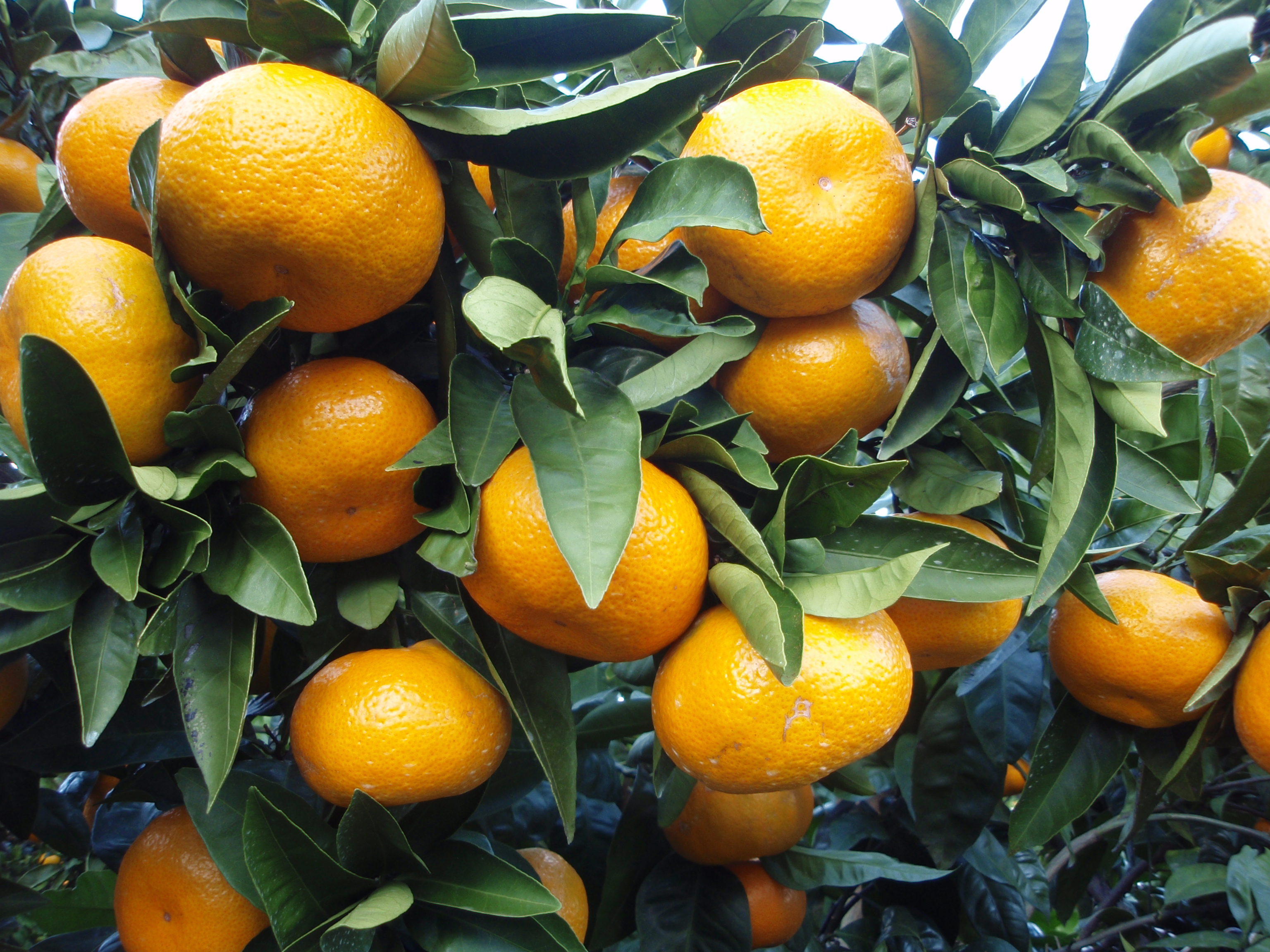Citrus

Citrus
By Batholith (Own work) [Public domain], via Wikimedia Commons
Citrus is the vernacular name commonly applied to evergreen trees in the family Rutaceae that produce oranges, lemons and other edible fruits of natural and hybrid species of the genus Citrus. Most are believed to have originated in southeastern Asia. Only four of the common fruits, namely citron (Citrus medica L.), common lime {(Citrus aurantifolia (Christm.) Swingle)}, pummelo (Citrus grandis Osbeck) and mandarin (Citrus reticulata Blanco) are true species, whereas all others are hybrids. These include sour orange (Citrus aurantium L.), sweet orange (Citrus sinensis Osbeck), lemon (Citrus limon Burm.), and grapefruit (Citrus paradisi Macf.). Most of these have additional cultivars, some of which had attained the status of species.
Citrus trees usually blossom in the spring, the fruit growing during summer. The earliest species or cultivars ripen in the autumn, the latest during the following spring. The only exceptions are lemons, which may blossom and produce fruit several times a year. Citrus fruit is a true fruit, consisting of radially arranged segments that are enclosed within the peel or rind. The segments (together called “pulp”) contain the juice and are the edible part of the fruit. The rind consists of the internal, whitish albedo (which disappears in mandarins) and the external, flavedo. Embedded in the latter are oil glands. Citrus fruit ripens slowly, turning yellow (lemons, grapefruits) or orange, and may remain on the trees for long periods.
Citrus is one of the main fruit trees in the world, as over 100,000,000 tons were produced in the year 2002. In commerce it is sold as fresh fruit, juice, canned segments and many products, including wines, jams oils and pharmaceuticals. By-product wastes are used as animal feed. About 20,000 acres are planted to citrus in Israel, about half of which are oranges, the rest being grapefruits, easy-peel varieties and lemons.
Citrus pests in the Middle East
References
Anonymous, 2003. FAO Production Yearbook for 2002, # 56. FAO, Rome, Italy.
Anonymous, 2003. Statistical Abstract of Israel, # 54. Central Bureau of Statistics, Jerusalem.
Drishpoun, Y. (Ed.) 2000. A Guide to the Control of Citrus Pests. Israel Ministry of Agriculture & Rural Development, Division of Citriculture
Brown, D. 2002. The Royal Horticultural Society New Encyclopedia of Herbs and their Uses. Dorling Kindersley, London.
Franco, C., Suma, P., Borges da Silva, E., Blumberg, D. and Mendel, Z. 2004. Management strategies of mealybug pests of citrus in Mediterranean countries. Phytoparasitica 32: 507-522.
Spiegel-Roy, P. and Goldschmidt, E.E. 1996. Biology of Citrus. Cambridge University Press.
Websites:
